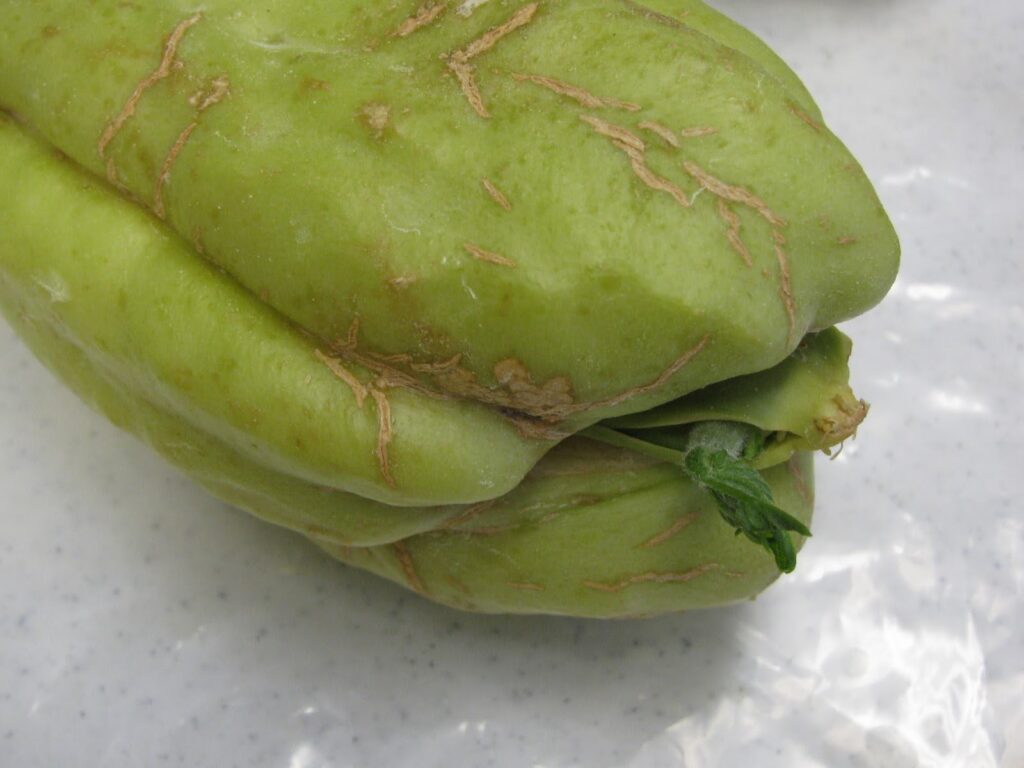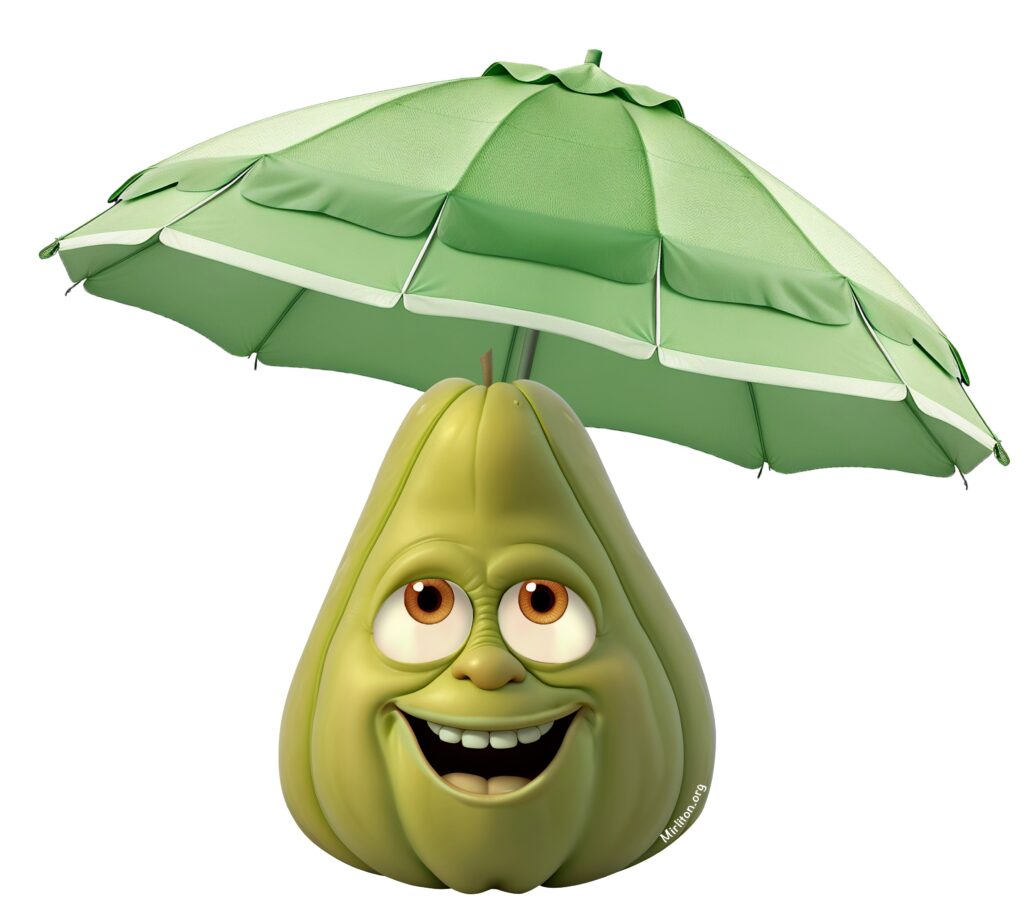Corking: Another way to Verify You are Getting An Authentic Heirloom Mirliton

Did you ever notice the brown lines on some mature mirlitons? They’re a fairly reliable way of knowing if the mirliton is a locally grown Louisiana heirloom. Dr. Jorge Cadena Iñiguez, a leading world expert on chayote (mirlitons), recommends we use the term Corking or Cork lines for the brown, cork-like lines that sometimes appear on the skin surface of mirlitons.
Corking in mirlitons is a form of “lignification” and is composed of lignin, the same substance that comprises bark cell walls. It probably develops to protect the fruit from pests and disease. What is important for us is that only mature mirlitons develop cork. So, if someone is selling or gifting a mirliton with cork lines, it was probably locally grown. (Imported chayote is never left on the vine long enough to develop cork lines.)
Not all locally grown mirlitons will have cork lines; they may have been picked fresh off the vine. But if you see corking, it’s another reason to believe it’s an authentic Louisiana Heirloom mirliton.

Recent Comments